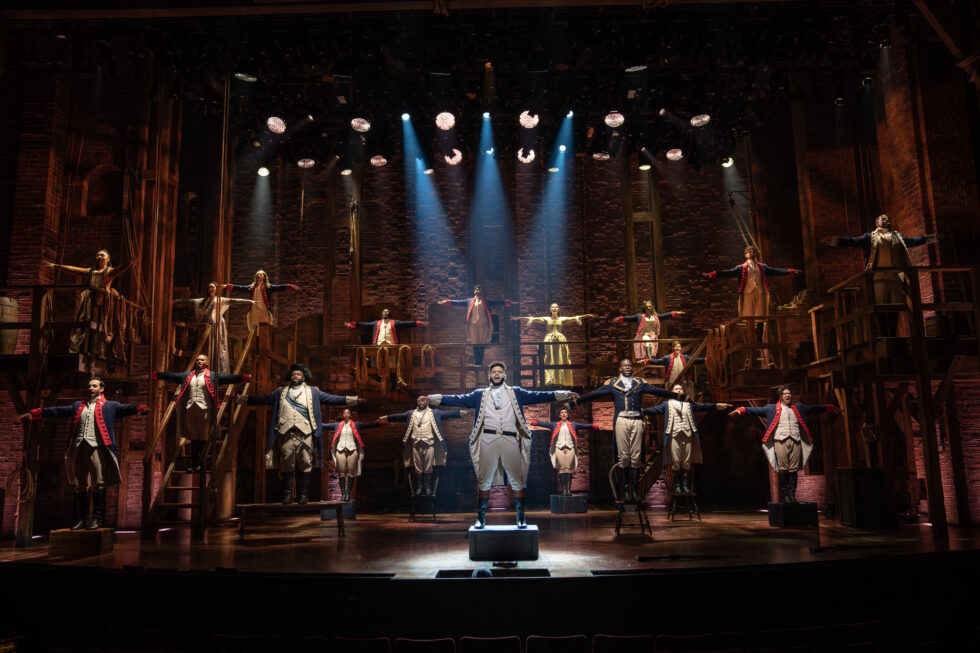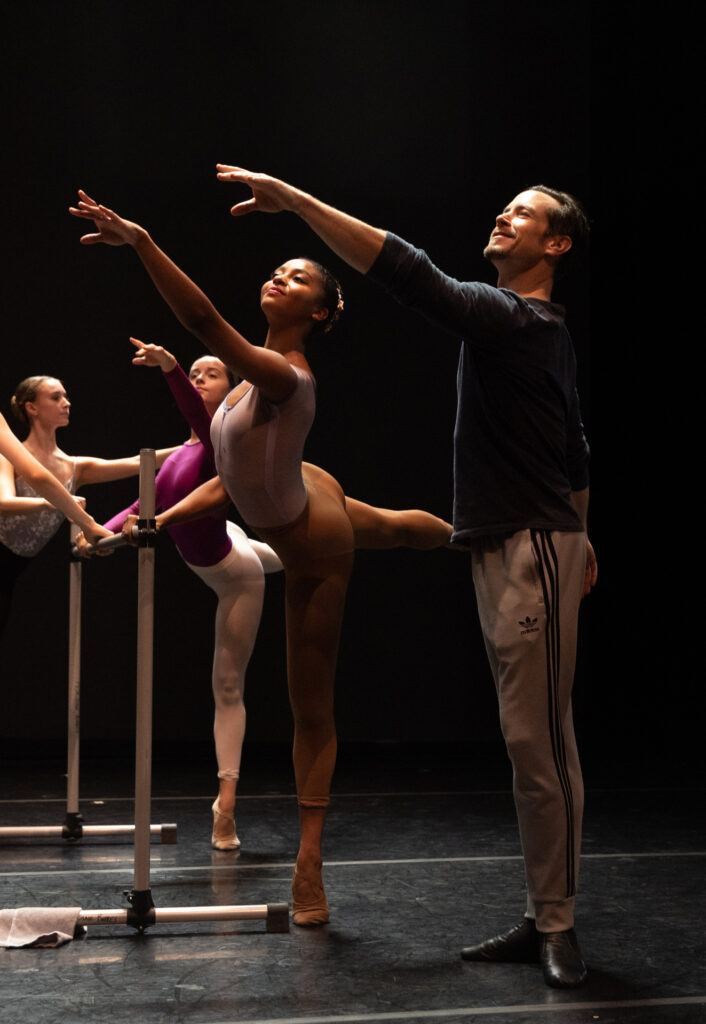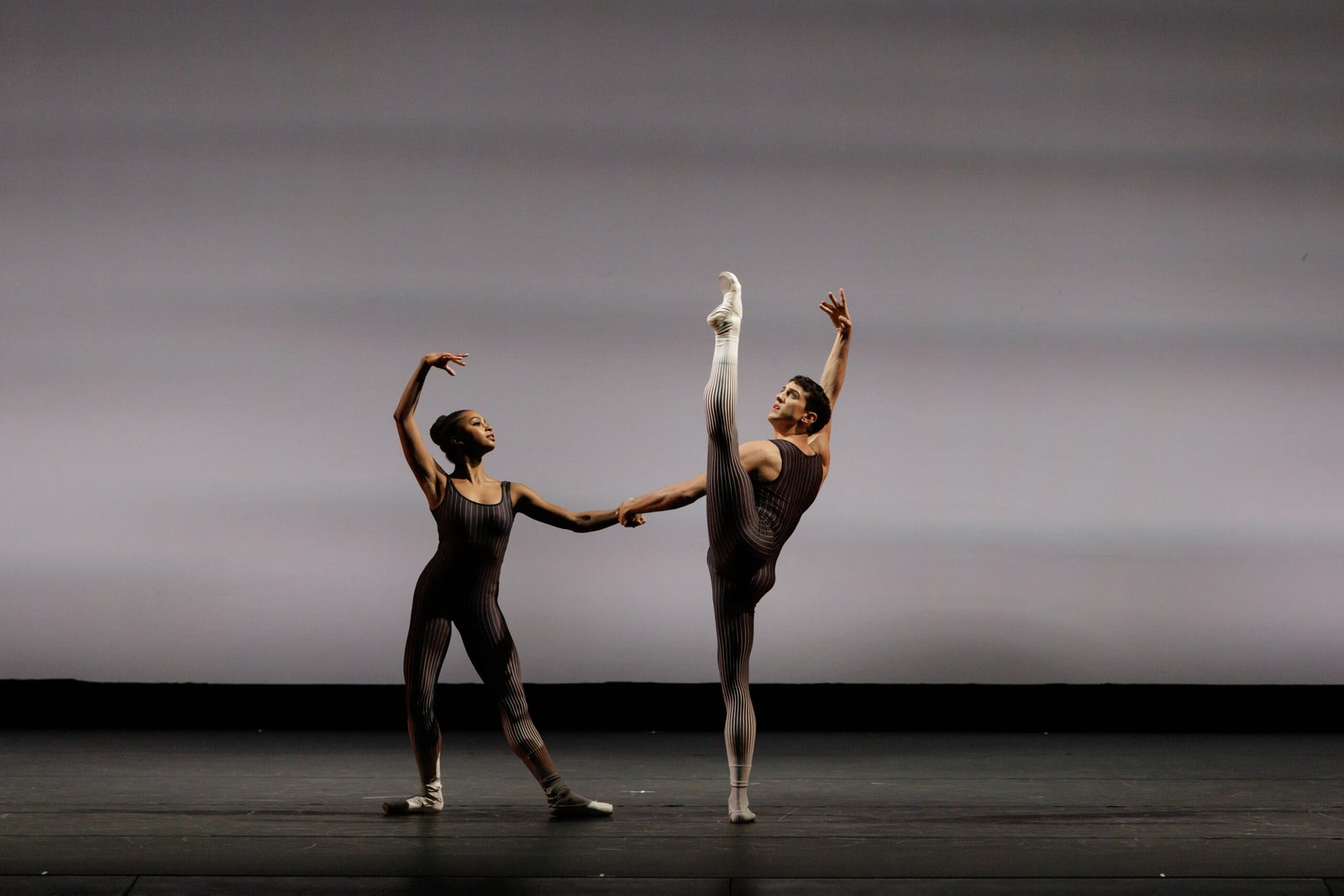
When Camille Upshaw arrived at The Juilliard School in 2007, she had been a competitive dancer for a decade. “There was still some stigma about competitive dancers,” says Upshaw, who attended the Baltimore School for the Arts and trained at the Spotlight Studio of Dance in Millersville, Maryland. “We were seen as people with legs and curves – and that wasn’t necessarily true!” I had to fight against this stereotype. Yes, I can do things with my feet, but I also have something deeper to offer.” Casting directors agreed. After graduating, Upshaw appeared in three Broadway shows.
The “comp kid” image has come a long way. Once seen as superior performers who prioritized tricks and trophies, competitive dancers now fill the ranks of top colleges, conservatories and companies around the world. Competition studios train dancers who aren’t just ready to win—they’re ready to work professionally. And the world of dance now gives them room to flourish.
The bar continues to rise
How did competitive dance achieve this image upgrade? One factor is that the technique of racing has increased dramatically in the last 20 years. “Every time someone steps it up, whether it’s a studio or a dancer, a whole shift happens,” Upshaw explains. “You’re only as good as who you race against.” And flexibility, always a comp strength, became even more impressive. To win, today’s power kids have to do more than master the latest trendy moves. They must also study different dance styles and perform innovative choreography.
Competitions and conventions have also changed their priorities, with many now emphasizing their educational aspects rather than focusing on titles and trophies. Choreographer Jessica Lang, who competed as a child and teenager before attending Juilliard and embarking on a professional career that included running her own company and dancing for Twila Tharp, believes the change has been particularly impactful. Lang says that competition directors with an educational focus have helped the dancers in the competitions “become more than what the outside world might perceive them to be.”
Studios are also bringing in more guest artists. “Dancers participating in competitions get direct exposure to the professional world from an early age,” says Katie Langan, chair of the fine and performing arts department at Marymount Manhattan College. Often this contact comes in the form of successful alumni returning to teach and choreograph.
Competitions and competing dancers tend to be very active on social media, offering a wealth of information and footage of top performers and schools – which has helped raise the overall technical and artistic standards of the scene. “Students can easily search for a competition, see who won last year and watch those routines,” says Michelle Larkin, co-owner of Larkin Dance Studio in Maplewood, Minnesota. Larkin’s niece, Mackenzie Larkin Simaniec, an instructor at Larkin Dance Studio, adds, “We can all look at what other studios are doing in a way that’s not copy but admiration. What can I get to do? our: dancers, the best they can be?”
And social media visibility has helped people in other parts of the dance world understand what competitive dancers are capable of. “Competitions publicize the winning dances as marketing,” says Upshaw. “It brings people’s names out.”

Dance culture is changing
Langan admits that when she first got into racing about a decade ago, she was skeptical. Then she saw the performers. “These students are very, very talented,” she says. “They’re fearless and their solos are so well choreographed.” Langan isn’t the only head of a college dance program whose assumptions about competitive dance are being challenged. Scholarship programs at competitive events have led to the intertwining of competition and the college field. More gifted kids are pursuing dance majors, and in turn, more dance departments are welcoming them.
There is also a change within: these dance departments. “We’re breaking down the hierarchy,” says Langan. “No one style is better than any other.” This often involves incorporating cultural and social dance into the curriculum; it also means no longer looking at concert dance, especially ballet and modern, as the be-all and end-all. Dancers who have competed in jazz, contemporary, tap, hip-hop, theater, and acro may feel more welcome in college if every aspect of their training is valued.
When it comes to finding work, flexibility is an asset in today’s dance climate. Even the most classically oriented ballet companies are looking for well-rounded dancers, a trend that started a few decades ago and is now becoming more common. Madison Brown, now a dancer with the American Ballet Theater, attended frequent competitions as a teenager. Although she remembers several teachers wondering why she would continue to compete in contemporary after announcing her intention to become a professional ballet dancer, Brown says she is grateful for the breadth of her training. “I hear a lot of people say they wish they had used other styles growing up.”


Looking to the future:
Just as professional dancers often revisit their childhood studios, many former competitors, now associated with big names and institutions, return to teach and judge events they attended as students. More and more of these alumni have gained positions of power in the dance world and are able to mentor or even hire members of the next generation.
“When I was doing conventions, I crossed paths with choreographers like Andy Blankenbuehler, who I later started working with,” says Upshaw, whose Broadway credits include the ensemble of Hamilton and the musical’s assistant choreographer Hell’s Kitchen. Now Upshaw is the one with the influence. As a judge for On Stage America a few years ago, “I loved being behind the table,” she says. “I saw so much potential in these young artists. The confidence they exuded gave me a lot of hope for the future of dance.”
The “dancing moms” effect:

From 2011 to 2019, the reality TV show “Dance Moms” garnered high ratings with its talented kids, their overbearing teacher, and a cast of devious stage parents. Unfortunately, “the show made it seem like competitive dance was all about negativity and drama,” says Mackenzie Larkin Simaniec. “It gave the competitions a bad name.” Now that it’s been several years since the show ended (besides the recent reunion special), the shadow cast by “Dance Moms” is finally receding.
“It was not representative of the community that most of us try to surround ourselves with,” Simaniec says. “You have to have a positive competitive relationship with the people you’re up against. You have to appreciate everything that happens on stage.”
Comp Kid Magic:
As more and more competitive dancers enter higher education and the professional world, directors and choreographers are seeing firsthand all they have to offer.
Confidence on stage. “Competitions give you stage experience,” says choreographer Jessica Lang. Broadway dancer Camille Upshaw agrees. “Competing every weekend made me feel comfortable in front of the crowd. I knew how to manage my nerves. I made mistakes on stage and learned how to recover. These tools are so important.”
Strength and endurance. “As a professional, you can dance all day, with only a short break for lunch,” says Madison Brown. “It was like a day at a convention seminar for me! When I joined ABT Studio Company, I was less overwhelmed because I was exposed to that workload at an early age.”
Quick thinking. As a result of their experience in fast-paced convention environments, “Dancers in competition are able to learn a lot of material very quickly,” says Lang. “They are musical and hyper-rhythmic.”
